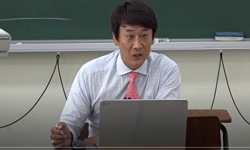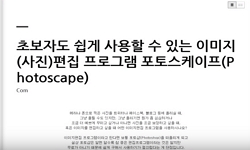시에는 시간과 공간을 가리키는 시어가 있다. 본고에서는 육사시에 나타난 시어의 공통된 이미지에 대해서 연구하고자 한다. 첫째, 시간적인 시어는 긍정적 의미의 이미지와 부정적 의미의...
http://chineseinput.net/에서 pinyin(병음)방식으로 중국어를 변환할 수 있습니다.
변환된 중국어를 복사하여 사용하시면 됩니다.
- 中文 을 입력하시려면 zhongwen을 입력하시고 space를누르시면됩니다.
- 北京 을 입력하시려면 beijing을 입력하시고 space를 누르시면 됩니다.
https://www.riss.kr/link?id=T7401613
- 저자
-
발행사항
서울 : 명지대학교 사회교육대학원, 2000
-
학위논문사항
학위논문(석사) -- 명지대학교 사회교육대학원 , 문예교육학과 문예창작전공 , 2000. 2
-
발행연도
1999
-
작성언어
한국어
- 주제어
-
KDC
811.6 판사항(4)
-
DDC
811.15
-
발행국(도시)
서울
-
형태사항
85p. ; 27cm.
- 소장기관
-
0
상세조회 -
0
다운로드
부가정보
국문 초록 (Abstract)
시에는 시간과 공간을 가리키는 시어가 있다. 본고에서는 육사시에 나타난 시어의 공통된 이미지에 대해서 연구하고자 한다.
첫째, 시간적인 시어는 긍정적 의미의 이미지와 부정적 의미의 이미지로 나눌 수 있다.
긍정적 이미지로는‘새벽'‘봄’등을 들 수 있다. 새벽과 유사한 시어로는‘새벽’, ‘닭울음 소리’를 들 수 있다. 육사의 시에서‘새벽’은 믿음 속에서 암흑을 찬란한 빛으로 바꾸어 주는 희망의 전달자의 이미지이다. 육사의 시에서‘봄은 겨울을 지내고 생명의 탄생을 기원하는 이미지다.
부정적 이미지로는‘밤’,‘겨울’등을 들 수 있다. 밤은 육사 시에 자주 등장하는 시어이다. 주로 초창기기의 시에서 많이 볼 수 있는 시어이며, 일반적으로 어둡고 절망적인 상징이다. 이육사의 시에서 밤이라는 시어가 자주 등장하는 것은 시대적 상황과 무관하지 않다. 육사가 인식한‘겨울’은 생명적 전개를 거부한 한계상황이다.
둘째, 공간적인 시어로는 긍정적 의미의 이미지와 부정적 의미의 이미지로 나눌 수 있다.
긍정적 이미지로는‘별’,‘내고장’,‘고성’,‘광야’가 있다.
‘별’은 삶의 자세와 의지를 구체화하여 상징한다. 그의 삶이란 현실과의 대결에서 물러섬이 없고 계속적인 전진뿐이다. 이러한 자세가‘별’이 지니는 불굴의 생명력과 맺어져 그의 시에 표현되어 있다.
<靑葡萄>에 담겨져 있는 ‘내고장’은 생명의 풍요와 평화가 담겨져 있는 이미지이다.‘내고장’은 어둡고 억압받던 고향이 아니라 회복되어 돌아가야 할 생명의 이미지이다.
‘고성’은 단순히 유폐된 단절의 공간이 아닌 끊임없는 시련의 이미지이다.
그 시련은 신념과 희망이 있기에 결코 버릴 수 없는 공간이다. 따라서 시적 자아는‘고성’이라는 고립된 공간에 머물르려 하지 않는다.
‘광야’는 시인이 노래의 씨를 뿌릴 곳이며, 백마타고 오는 초인이 목놓아 부르게 할 곳이다. 따라서‘광야’는 시적 자아가 이상을 꿈꾸는 공간으로 이 공간은 신성한 이미지이다.
부정적 이미지로는‘무지개',‘하늘’,‘항구’,‘동굴’,‘무덤’,‘골방'이 있다.
육사는 절망적인 죽음의 극한경을‘무지개’로 형상화함으로써, 환상적이지만 정서적 진실을 통한 감정적 초극의 통로를 마련하였다.<節頂>에서‘무지개’는 강철과 결합되어 굳은 의지와 동경이 효과적인 긴장체계를 형성하고 있다.
‘하늘’은 일반적으로 신 또는 초월적인 존재를 상징한다.<節頂>에서의 하늘은 끝난 고원이 있어 높음의 희망일 수도 승화일 수도 없다. 그것은 절망의 꼭대기, 포기의 이미지이다.
‘항구’는 많은 사람들이 오가는 불안정한 공간이다. 이런 불안정한 공간은 당시의 시대적 상황이나 시인의 심경을 표현하기에는 좋은 소재이다.
따라서,‘항구’라는 공간은 어둡고 황폐한 이미지이다.
<편복>에서의 박쥐는 궁극적으로 육사가 직면하고 있는 모순을 함축하고 있다.‘동굴'을 벗어나기를 원하며, 벗어나야 하지만 자기를 은폐하기에는 최적의 공간이기도 하다.
‘무덤’은 일제시대 문학작품에 자주 거론되던 상징 중의 하나이다. 주로 폐허가 된 조국의 모습을 의미하며 육사의 시에서도 예외는 아니다.
<黃昏>에서의‘골방'은 고립된 공간의 이미지이다. 육사는 그 시대의 한 인간으로써 현실을 살아가는 것이 곧 골방 속에 유폐되어 있는 것이라는 사실을 명확히 인식하고 있다.
이상에서와 같이 육사의 시에서 보이는 상징적 시어들을 시간과 공간으로 분류하여 연구하였다. 그러나 육사의 시가 모두 철저하게 상징의 기법으로 이루어진 것은 아니다. 초기의 작품은 다소 직설적이며 감정이 절제되지 않은 영탄이 드러나고, 직유와 같은 단순한 비유법에 의존하고 있는것도 사실이다. 그의 시는 대체적으로 1939년을 경계로 하여, 원숙한 경지에 이르게 되고 기교면에서 고도의 상징성을 획득한다.
다국어 초록 (Multilingual Abstract)
Poetry has poetic diction indicating time and space. This study aims at examining common images of poetic diction shown in Yook-sa's poems. First, I divided the time diction into positive images and negative images. For positive images, we can see t...
Poetry has poetic diction indicating time and space. This study aims at examining common images of poetic diction shown in Yook-sa's poems. First, I divided the time diction into positive images and negative images.
For positive images, we can see the words, 'spring' and 'dawn'. The similar words to 'dawn' are 'dawn' and 'the crow of a rooster.' In Yook-sa's poems, 'dawn' is the image of the carrier who brings hope changing darkness into shining light based in belief. In Yook-sa's works, 'spring' is the image of praying the birth of the life after a winter.
For negative images, we can see the words, 'a night' and 'a winter.' 'A night' is often shown in Yook-sa's poems and mostly his early works. 'A night' is generally the symbol of darkness and despair. The circumstances of the period when Yook-sa lived, called Japanese colonial period, are related with that 'a night' often appears in his works. 'A winter', in his consciousness, is the limited situation not allowing to expand his life.
Second, I divided the image of space into positive images and negative images.
For the positive images, there are 'a star', 'my hometown', 'a old palace' and 'a wide plain.' 'A star' symbolize the living behaviors and the will in detail. Yook-sa lived in the way to advance, never to back in faced to the hard actualities. This manner of his life is reflected in his works with the strong power of star's life.
'My hometown' in one of his poems <chung-po-do> is the image of the affluent and peaceful life. 'My hometown' is not the space of dark and suppressed but the image of the life that should be recovered and back there.
'A old palace' is the image of the continuous trials, not interrupted space from the world.. These trials are never thrown away due to belief and hope. As the result, poetic self in his poems would not stay at isolated space, 'a old palace.'
'A wide plain' is the space where the poet seeds and the superman coming on white-horseback sings loudly, therefore, 'a wide plain' is the space where the poetic self is seeking idle and this comes to be the sacred space.
For negative images, there are ' a rainbow', 'sky', 'a port' 'a cave', 'a grave' and 'a back room'
Yook-sa made up the emotional transcendental path through the fantastic and more emotional truth by making a form, from the limit of the desperate death to 'rainbow.' In <jyu-jyung>, by 'rainbow' uniting with steel, the strong will and longing form the efficient tension system.
Generally 'sky' symbolizes the god or the transcendental existence. The sky, shown in <jyul-jyong>, is neither the hope for higher nor the sublimation because it has the ended plateau. That is the image of the top of despair or abandonment.
'A port' is the space where a lot of people move in and out so it is unstable. The unstable space like a port is a good space for expressing Yook-sa's emotion and the circumstances of that period when Yook-sa lived. As the result, 'a port' is the image of darkness and devastation.
A bat, shown in one of Yook-sa's poem <pyun-bok>, ultimately implicated the inconsistencies which Yook-sa was faced. He wanted to escape a cave and should do, but the cave is the best space for hiding himself.
'A grave' is one of the common symbols that were said to many literature written during the period of Japanese invasion. 'A grave' means, mostly, our devastated country and it is not except for Yook-sa's works.
'A back room', shown in <hwang-hon>, is the image of the isolated space. Yook-sa was definitely conscious of that living during that time is the same with being confined in a back room.
Upon this analysis, we studied the symbolic poetic words by classifying into space and time. However, not all Yook-sa's poems are made up by symbolizing.. It is true that early Yook-sa's poems are seen uncontrolled and direct feelings and depended on plain expressions, like a simple. On the point of in 1939, Yook-sa's poems are completed fully and acquired high symbolism technically.
목차 (Table of Contents)
- 목차
- ▶국문초록
- I. 서론 = 9
- A. 문제의 제기 = 9
- B. 연구사 검토 = 11
- 목차
- ▶국문초록
- I. 서론 = 9
- A. 문제의 제기 = 9
- B. 연구사 검토 = 11
- C. 연구방법 = 15
- II. 이미지의 상징적 의미 = 20
- A. 시간적 이미지 = 20
- 1. 긍정적 이미지 = 20
- (1) 새벽- 희망 = 20
- (2) 봄- 생명 원천 = 23
- 2. 부정적 이미지 = 26
- (1) 밤- 절망 = 26
- (2) 겨울- 비극 = 31
- B. 공간적 이미지 = 38
- 1. 긍정적 이미지 = 38
- (1) 별- 불굴의 생명력 = 38
- (2) 내 고장- 생명 원천 = 44
- (3) 고성- 탄생 = 47
- (4) 광야- 신성 = 49
- 2. 부정적 이미지 = 52
- (1) 무지개- 비극적 황홀 = 52
- (2) 하늘- 절망 = 57
- (3) 항구- 표랑 의식 = 60
- (4) 동굴- 은폐 = 65
- (5) 무덤- 비극적 현실 인식 = 69
- (6) 골방- 고독 = 70
- III. 결론 = 74
- ▶ 참고문헌 = 78
- ▶ Abstract = 82












